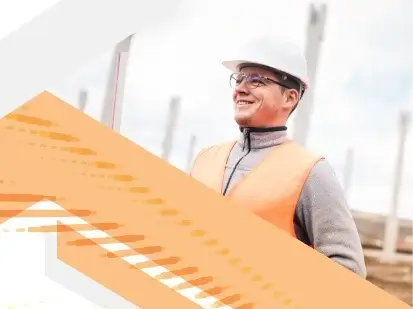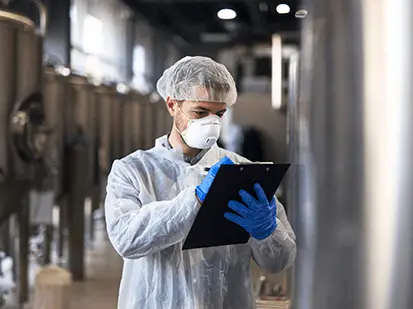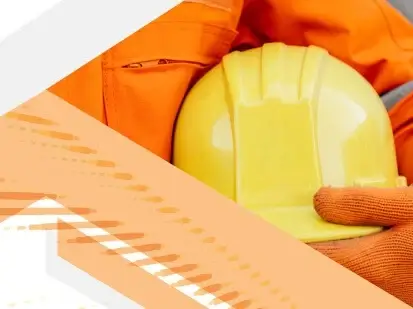TEKFEN - Asset Location Tracking in Multiple Countries
NUMBER OF ASSETS

5000 Personnel

1000 Motorized Equipment

4000 Non-motorized Equipment

140 Passenger Cars
Tekfen Construction and Installation Co., Inc., today a leading organization in challenging fields of contracting activities but also a studious environmentalist, traces its roots to an engineering consulting company established in 1956. An uncompromising dedication to global quality standards in its business conduct has underscored the company’s consistent growth and stability over six decades.
Tekfen Construction and Installation Co., Inc., as an affiliate of Tekfen Holding Co., Inc., is a respectable signature as an international contractor with major accomplishments in Turkey, the Middle East, North Africa, Caucasus, Central Asia, East-Central Europe. Its wide span of activities ranges from heavy civil works to refineries and petrochemical plants; from satellite towns to major industrial processing plants; from pipelines and marine structures to power plants, electrical and communication works. With its sister companies and strategic partnerships, Tekfen is capable of extending its services to a large span of clients, worldwide. As an ISO 9001:2015, ISO 14001:2015, ISO 45001:2018 and ISO 27001:2013 certified company, Tekfen Construction is dedicated to higher quality standards, aiming for sustainable excellence through "continual improvement" and strict belief in "teamwork" with prioritizing health and environmental protection.
PURPOSE
MINIMIZING COSTS, PREVENTING LOSS OF TIME, ACHIEVING EFFICIENCY
Tekfen is among the leading construction companies, carrying out mega projects concurrently at multiple locations around the world. The number and functions of the motorized and non-motorized vehicles, passenger cars and personnel, used for the projects at different locations around the world, differ from each other.
In this scope, the project implemented for Tekfen was planned for the construction sites in Turkey, Qatar, Azerbaijan, Kazakhstan and Saudi Arabia.
The primary objective of the project was to prevent the loss of time, minimize the costs and achieve efficiency with the integrated use of RTLS and RFID technology. For this objective, it was necessary to track the operation instantaneously and semi-instantaneously, and to analyse and report the data flow.
Expected outputs were;
- Tracking the locations of the passenger cars, motorized and non-motorized equipment and personnel
- Tracking the performance of the passenger cars, motorized and non-motorized equipment and personnel
- Collecting data such as distance travelled daily, total driving time, speed graphics, speed violations, personnel operating the vehicle, retrospective footprint, and simulation of the past drive on the map, by interpreting in the system the data received from the passenger cars
- Establishing the driver score on the course of the driving data received from the passenger cars
- Determining the projects where the vehicles are used, by means of information such as the equipment code and type of vehicles
- Preventing losses by means of the location tracking and inventory count of the equipment
- Providing instantaneous data for the traffic and route optimization
- In line with all these data, establishing the sustainable efficiency and cost management mechanism by analysing and optimizing the inventory requirements
CHALLENGES
MULTIPLE COUNTRIES, INTERSITE TRACKING
A fixed infrastructure system would not be sufficient, since the operational sites in the project were located in different countries and possessed different dynamics and process management requirements. The Active RFID based UWB tags for the numerous small equipment used for the projects caused high costs. However, it was necessary to carry out inventory count and tracking in order to prevent equipment losses. In addition, it was necessary to track the personnel, equipment and motorized vehicles throughout the duration that they were active outside the construction sites.
A hybrid system had to be developed in order to achieve instantaneous and semi-instantaneous traceability of the entire operation. In the scope of the project, it was necessary to provide digital traceability of the entire operation using HF, UHF, Active RFID based UWB and GPS communications.
The project covered 5000 personnel, 5000 motorized/non-motorized equipment and 140 passenger cars. It was required to produce instantaneous tracking data at the sites, and to transmit these data to the system uninterruptedly. Alternative solutions had to be developed against possible communication failures, changing the data transmission method in case of failure and keeping records for at least one week in order to prevent data loss.
Lastly, it was necessary to carry out LDAP, Here, Oracle and Cisco integrations, and to store the data using MS Azure.
SOLUTION
HYBRID AND INTEGRATED SOLUTION
At different construction sites in Turkey and Qatar, UWB based Active RFID Anchors were installed in a way to cover and separate the identified zones. GPS + Active RFID and HF integrated equipment UWB tags were installed on the heavy duty machines and passenger cars. The personnel were handed out UWB based Active RFID and HF dual tags, and the relevant personnel were handed out GSM + UHF hand terminals. UHF tags were installed on non-motorized equipment. Lastly, the software configuration was completed, and the personnel, equipment, heavy duty machine, passenger car, zone, etc. to be tracked in the system were identified. Thus;
By means of the occupational health and safety software on the personnel tags, the alarms given in case of fall, immobility or emergency call by the personnel are instantaneously transmitted to the centre together with the zonal location. In addition, the locations of the personnel are tracked, allowing the reporting of information such as retrospective footprint.
The starting of the passenger cars and heavy duty machines is integrated to the tracking system for the personnel with cards. In this way, the vehicles can be used by the authorized persons, while the unauthorized attempts are tracked.
All the data received from CANBUS, during the period that the vehicle is used by the authorized personnel with the card ID, are matched, and forwarded to the centre via the GPS together with the location information. When the GPS is out of coverage, the RF communication is activated.
In this way, the information is transmitted to the centre if there is an anchor in the vicinity; and in case of absence of both connections, the data are recorded and transmitted as soon as the first connection is established.
The distances are measured continuously in case of interactions between heavy duty machines and interactions between heavy duty machines and pedestrians. In case of an interaction regarding the defined warning and danger distances, the operators and the personnel are warned.
The UHF tags on the non-motorized equipment are read with the hand terminals, and the location information of the equipment is transmitted to the centre via the GPS. The other data received from the site are reported after passing the algorithm filter.
Thanks to these efforts, the following information: In relation with the personnel: Location, the project where they are employed, performance, driving reports (Sudden acceleration, deceleration, etc.), work accidents such as slips and falls or emergency calls.
In relation with the equipment and vehicles: Location, the project where they are used, performance, driving reports (Fuel consumption, etc.) is transmitted to the centre. The equipment losses were prevented with these data. With traceability, a vehicle, personnel or equipment can be redirected optimally in case of need in another project.
GAINS
A hybrid and cost effective solution was provided with HF, UHF, Active RFID based UWB, GSM and GPS.
KEY FACTORS FOR CHOOSING WIPELOT RTLS
Analysing the needs of the customer and all the operations of the construction sector, Wipelot developed a hybrid solution specifically for the customer. This solution provided:
Reduction in operational costs thanks to the reduced fuel consumption, as the intersite redirecting of the motorized and non-motorized equipment and the personnel is carried out according to the instantaneous location and work plan,
Reduction in accident risk, and accordingly, cost savings in maintenance and repair expenditures,
Elimination of the potential workforce safety risks of the heavy duty machines,
Reduction in maintenance and repair costs, as the breakdowns of unmaintained equipment are reduced with the maintenance-repair tracking of the equipment.
In this way, Tekfen Construction enhanced the efficiency and saved about USD 500,000 annually.




